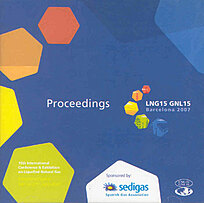
The next generation of large LNG carriers for long distance and harsh environments.
Author(s) : NOBLE P. G.
Summary
Growth in the production and ocean trade of LNG has averaged about 6.5% a year over time but has accelerated to about 9% in recent years. Driven by this commercial imperative, technology is being developed to allow new classes of LNG ships to be designed and built. These designs are pushing technological constraints and fuelling innovation. The largest commercial impact on design is the jump in size from conventional LNG carriers of around 145,000 m3 to large LNG carriers up to 265,000 m3 capacity. The larger, size of these next generation carriers is causing the industry to research and develop many design optimizations including, the effects on membrane tank sloshing loads, larger block coefficients, and alternative tank technologies and propulsion options. The paper also looks at even large LNG carriers and discusses the economies of scale of very large ships while at the same time recognizing the challenges of interfacing such large vessels on either end of the supply chain. Further thoughts are given on the use of large LNG carriers in high latitudes trades such as from Canadian Arctic Islands or from Russian Arctic.
Details
- Original title: The next generation of large LNG carriers for long distance and harsh environments.
- Record ID : 2008-1135
- Languages: English
- Source: LNG 15. Proceedings of the 15th International Conference and Exhibition of Liquefied Natural Gas.
- Publication date: 2007/04/24
Links
See other articles from the proceedings (43)
See the conference proceedings
Indexing
-
Themes:
LNG and LPG;
Applications of liquified gases - Keywords: Methane carrier; Sea transport; Design; Market; LNG
-
Advanced LNG carrier with energy saving propuls...
- Author(s) : OHIRA H., SUETAKE Y., OKA M.
- Date : 2004/03/21
- Languages : English
- Source: LNG 14. Proceedings of the 14th international conference and exhibition of liquefied natural gas [CD-ROM].
View record
-
THERMODYNAMIC BEHAVIOUR OF LNG DURING MARINE TR...
- Author(s) : TANIGUCHI M., YONEYAMA T.
- Date : 1989/10/17
- Languages : English
View record
-
A NEW GENERATION OF LNG CARRIERS BASED ON A PRO...
- Author(s) : JEAN P., BOURGEOIS M.
- Date : 1984
- Languages : English
View record
-
Comparative efficiency of natural gas sea trans...
- Author(s) : ODISHARIYA G., IZOTOV N.
- Date : 2007/04/24
- Languages : English
- Source: LNG 15. Proceedings of the 15th International Conference and Exhibition of Liquefied Natural Gas.
View record
-
Domestic LNG supply system by pressure build-up...
- Author(s) : NAKANISHI K., IMAI H., WATANABE K., et al.
- Date : 2004/03/21
- Languages : English
- Source: LNG 14. Proceedings of the 14th international conference and exhibition of liquefied natural gas [CD-ROM].
View record
